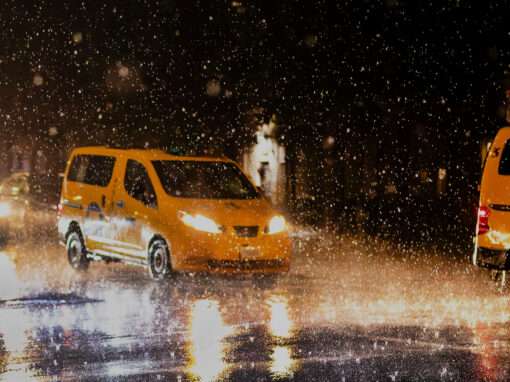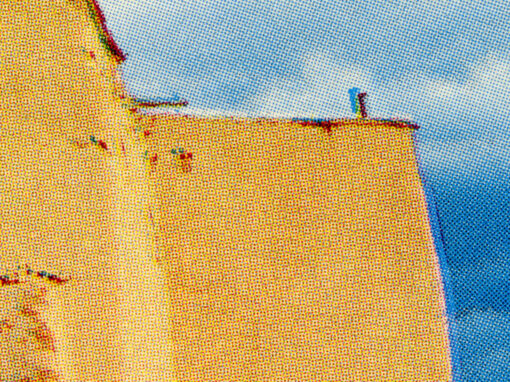One of the great joys of curiosity is the way it is so easily shared.
No, perhaps that’s wrong. Shared is wrong. I can share a thousand things—potato chips, space on a bench, an idea—without anyone else loving it or agreeing at all. Sharing is polite and always good manners. But sharing is also just a division into smaller parts. Sharing does not make any more room on the bench, it simply allows us to split what’s already there. I’m after something deeper here. Something more attached to the soul.
Curiosity is an invitation. Curiosity is an offer to make something larger. “Look at this,” I say. “This is really cool.” If you accept the invitation, if you look honestly, then suddenly there is more. There are two hearts filled with a new wonder large or small.
Buddha, Photographs by Michael Kenna
Prestel Publishing, 25th August 2020, ISBN: 9783791385082
review by W. Scott Olsen
Buddha, the new book of photographs by Michael Kenna, is the result of Kenna’s particular and personal curiosity. And now that I’ve seen the book, that curiosity, that wonder, is mine as well. This is the gift of a very good book.
Buddha has 160 images, all of them black and white (though I swear I can see gold and copper and green). Nearly all of them are images of Buddha statues. A few are landscape shots of where the Buddha statues are placed. A few are of bodhisattvas. How repetitious, right? I’ve seen Buddha statues my entire life. I’ve seen them in glossy magazines and in tourist trap storefronts. But that’s part of the point of this book. Their omnipresence makes small differences important.

Buddha begins with a smart introduction by scholars Jens-Uwe Hartmann and Gudrun Melzer. “No other symbol from any Asian religion is as prevalent as the depiction of the meditating Buddha,” they write. “Whether the image is painted or carved from wood, chiseled from stone or cast in metal, it is instantly recognizable by anyone nowadays. We require no additional explanation in order to understand who is being depicted.”
“This enables the photographs selected here,” they continue, “to present the depiction of the Buddha as a kind of universal (which is what makes it so unmistakable), while also clearly showing that behind every depiction there is a historical development. That historical reference is preserved by the photographs, for the Buddhas are not detached from their locations.”

What a wonderful invitation! Here, the book says, is something you think you know. Look closer. There are differences in form and setting. Those differences are the result of time and geography and culture and everything else. The rest of the introduction is a fine lesson in the basics of the history of Buddha iconography. In other words, the introduction gives me the tools to look, curiously, at the pictures.

According to the book’s biographical statement, “Michael Kenna is widely recognized as one of the world’s greatest and most influential living photographers…More than 70 monographs and exhibition catalogues have been published on Kenna’s work. His limited-edition fine art prints are in the permanent collections of over 100 institutions, such as The National Art Museum of China, Beijing, The National Museum of Modern Art, Paris, The Museum of Modern Art, New York, and The Victoria and Albert Museum, London.”

“Visiting eighty-eight Buddhist temples throughout Shikoku, Japan, was a fiftieth-birthday gift to myself.” So begins Kenna’s insightful and personal afterword. As he explains the reason for this gift, he describes his Catholic upbringing and his fascination with mystery and ritual. He had every intention of becoming a priest. “For various reasons,” he says, “… I did not become a priest. I chose instead the path of an artist.”
In 1987 he visited Tokyo for the opening of a show of his work, then traveled to Kyoto and Nara. “This is what I first experienced Buddhist temples and Shinto shrines. I was immediately mesmerized by the complex and imaginative statuary and imagery, particularly the enormous Vairocana Buddha at the Todaiji temple complex in Nara. There was something so powerful, awe-inspiring and yet calmly peaceful and serene about this massive Buddha, and it kindled an immense curiosity in me. Up to this point, I had been indifferent and quite ignorant about Buddhism. This now changed and I felt the need to educate myself.”
The book is arranged by region. It begins with Japan, Korea, China, and ends with Laos, Thailand Vietnam. Cambodia, India, Afghanistan, Pakistan, Tibet, Nepal and Myanmar fill the middle. Turning each page, I found myself pausing, studying the images. Isn’t that what every photographer hopes for? As images, every one is moody and compelling. As windows into faith and history and place, every one is filled with riches.
Michael Kenna is curious about the Buddha in three-dimensional art and how the small differences in eyes and lips and hair and hands can reveal culture and place. His curiosity is infectious.
There are a number of museum shots, but the majority of the images in Buddha are field work. A fine sense of being present, the immediacy of a particular moment, fills this book. And it’s important to note that the landscape shots are extraordinary. If an understanding of Buddha statues and carvings is rooted in history and place, then it is important to include evocative images of that place. These are just a few of the many ways Buddha becomes a deeply curious book. There are no answers. Just a thousand windows.

A great many photo books contain images on a well-defined theme, but the images themselves are stand-alone artifacts. One of the wonderful things about Buddha is the way every page builds upon the ones that have passed. The book is a lesson, variations on a theme, an arpeggio. It is a book I have already opened many times, each time happily, each time more curious than the time before.


A note from FRAMES: if you have a forthcoming or recently published book of photography, please let us know.




